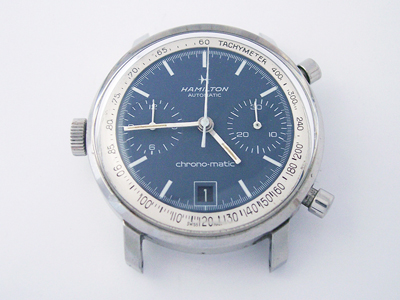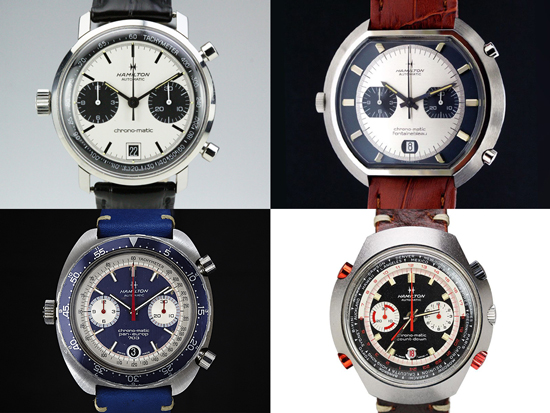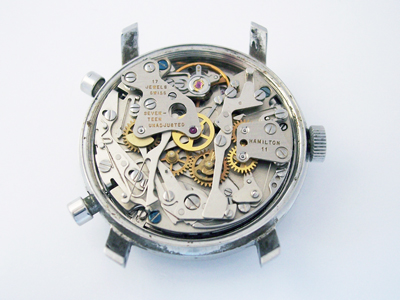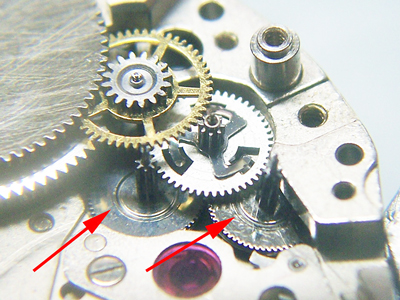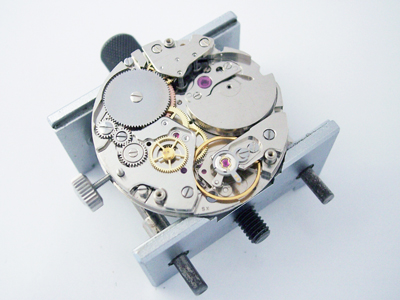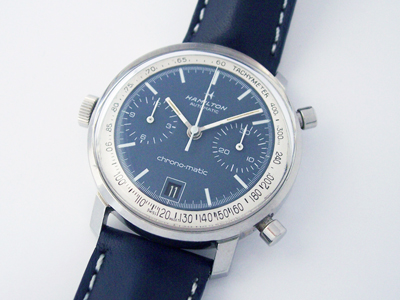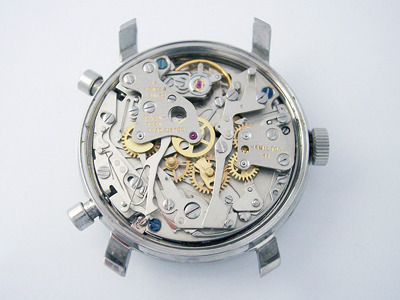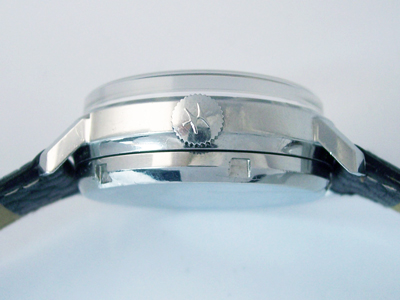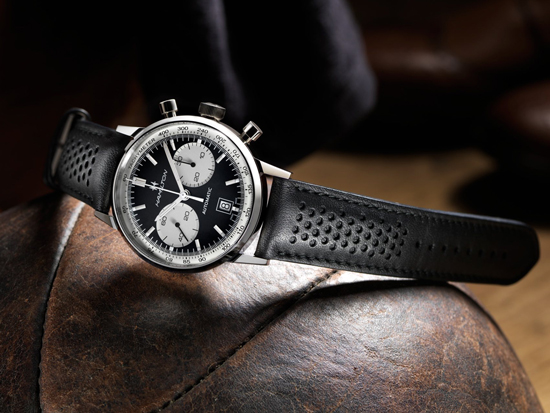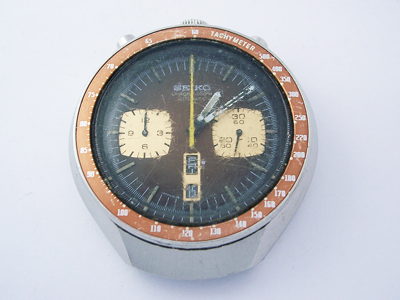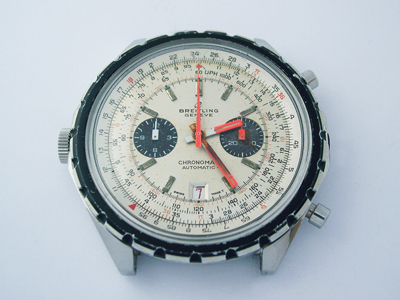Another Chrono-Matic on the blog, this time from Hamilton.
(Click pictures to enlarge)
The ‘Chrono-Matic’ name will be recognised by many vintage watch enthusiasts and collectors as it is synonymous with the early automatic chronographs produced by Hamilton, Breitling and Heuer. Although all Chrono-Matic chronographs are collectible these days, the Heuer models in particular are highly prized as the Chrono-Matic name was dropped from the dial on all but the earliest examples.
Hamilton acquired Buren in 1966 to become Hamilton-Buren and subsequently played a role in the development of the world’s first automatic chronograph calibre, working with Heuer, Breitling and the renowned chronograph specialists Dubois-Dépraz. Without the input from Hamilton-Buren who provided the base calibre, the project would never have got off the ground. The history of the first automatic calibre and the race to market is an interesting one but rather than cover old ground I’ll direct any interested parties to Jeff Stein’s excellent article ‘Project 99’ for further details.
Hamilton produced Chrono-Matic models in limited numbers during the early 1970’s, the watch in this post being one of just four models they released. Along with the same watch in a white/black (Panda dial) configuration, Hamilton also produced the quirky Fontainebleau Chrono-Matic with its futuristic tonneau shaped case, the Pan-Europ chronograph and the extremely rare Chrono-Matic Count-Down.
The Count-Down model is particularly interesting as it reversed the ‘traditional’ layout used in all other calibre 11/12/14/15 powered watches, positioning the crown on the right and the pushers on the left. You’ll notice too in the picture above that as the calibre has been rotated 180 degrees inside the case the watch has the hour register on the right hand side of the dial and the minute counter on the left. The watch is powered by a cal. 14 movement (or Calibre 141 as Hamilton re-branded it) so it also has a GMT hand and two additional crowns on the right used to rotate not one but two internal bezels – one for the GMT hour and one for the city.
Getting back to the subject of this post the watch arrived in decent cosmetic condition and opening it up revealed the expected Hamilton Calibre 11. Although the watch was running it did have a couple of mechanical issues; the chronograph wouldn’t reset cleanly to zero and the automatic winding mechanism wasn’t building up any power reserve.
Problems with these automatic winding mechanisms are often caused by the rotor scraping on the chronograph bridge or mainplate but that wasn’t the case here, it was much more obvious on disassembly; one of the reduction wheels was missing altogether and the second had a broken top pivot. I’m guessing that the last watchmaker to work on this watch couldn’t source the parts, so just re-assembled with manual winding only – relegating it to a “Chrono-Manual” if you will!
After making a few enquiries replacement reduction wheels were sourced and purchased from Italy which solved the problem in short order.
The rest of the service on the base movement was straight forward and things were already starting to look better…
Unfortunately the aforementioned watchmaker struck again when it came to the chronograph module as all the eccentric screws and jumpers had been moved in an effort to get the chronograph working correctly. A lot of time must have been spent trying to get it right as one of the eccentric screw had been moved so much that it was now loose in the plate and moved fractionally with every reset, plus the sliding gear had been glued together and so could no longer be adjusted. Not good.
Thankfully both problems were repairable without parts, the sliding gear was separated, cleaned and staked to make it a solid friction fit once more and the hole for the eccentric screw in the bridge closed slightly with a convex punch to make it a tighter fit.
After that the chronograph had to be rebuilt and set up again from scratch which is no mean feat on the cal. 11 as it has a combination of six eccentric screws and jumpers. (This was simplified to four on the re-designed cal. 12.)
With the movement problems ironed out, the case cleaned and crystal polished the watch could finally be rebuilt.
What isn’t obvious from a dial-on shot is how thick this watch is. As the design of this calibre is modular an increase in movement height is inevitable but it is well hidden in watches with more substantial cases like the Heuer Autavia or Breitling Cosmonaute. With a case diameter of just 37mm the Hamilton is quite small and with no external bezel to bulk out the case the resulting watch is surprisingly thick at 14mm. Not that it should put anyone off buying one as it’s still a great watch.
Finally, it may also be of interest to know that Hamilton is due to release a re-issue the Chrono-Matic later this year called the “Intramatic 68”.
With Hamilton’s H-31 automatic chronograph calibre inside the layout is more traditional with the pushers and crown all on the right. The size has been increased to 42mm too making it quite a substantial watch which may wear even larger as it has no external bezel.
If you are slow out of the blocks, tracking one of these down may be just as hard as finding an original as the Intramatic 68 will only be produced in a limited edition run of just 1,968.
Rich.
** Many thanks to Mike Causer for letting me feature his watch on the blog. **

